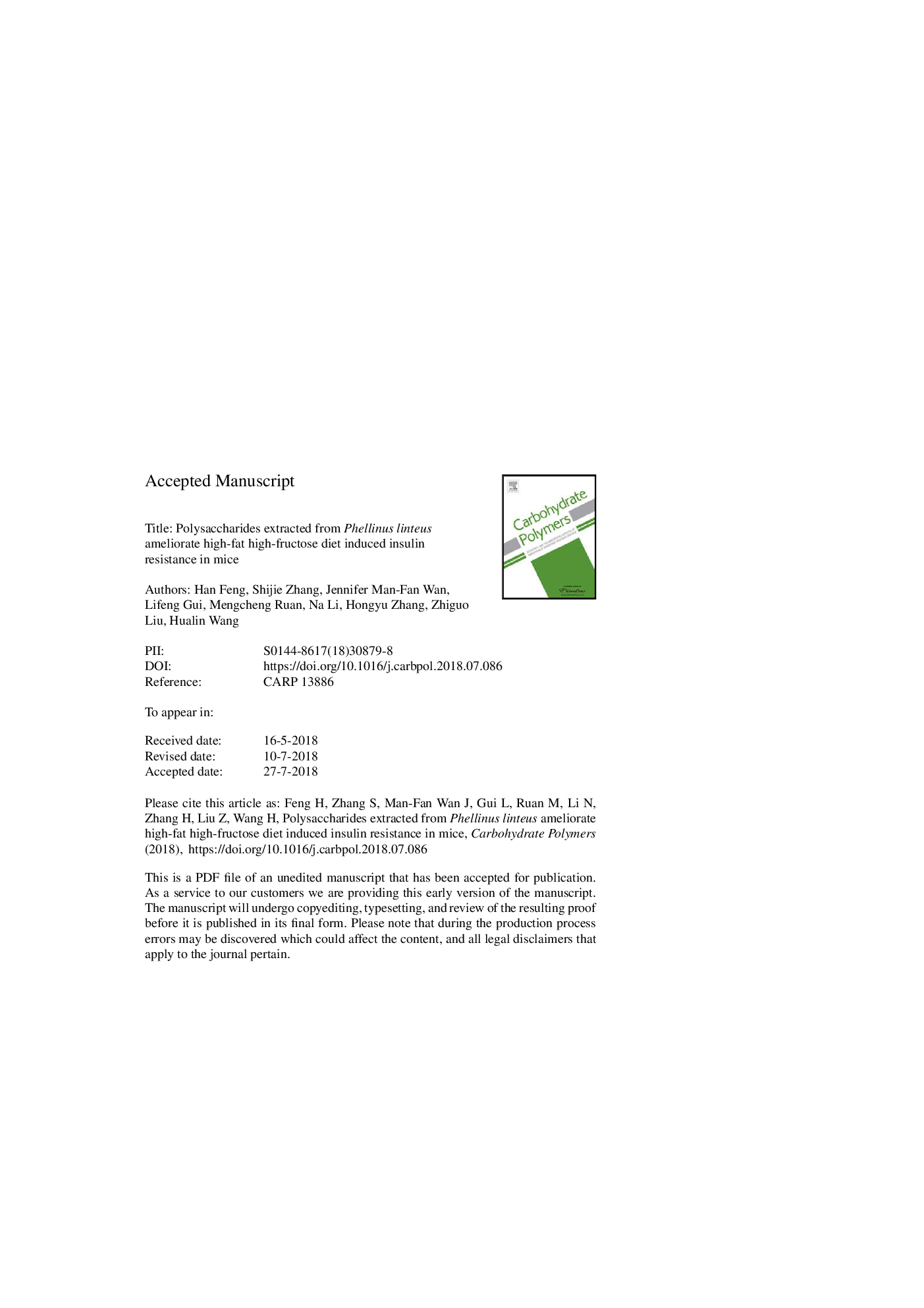| Article ID | Journal | Published Year | Pages | File Type |
|---|---|---|---|---|
| 7781213 | Carbohydrate Polymers | 2018 | 37 Pages |
Abstract
Phellinus linteus polysaccharide (PLP) has hypoglycemic effects, but mechanisms remain unclear. Male C57BL/6âJ mice were either fed a normal diet (CON) or a high-fat high-fructose diet (HFD) for 16 weeks, and starting from week 12, HFD-fed animals in PLP group were orally given PLP. PLP administration significantly reduced fasting blood glucose level and ameliorated glucose intolerance. Differentially expressed genes involved in FOXO signaling pathway and in vitamin B12 (VB12) transport were identified between HFD and PLP group. HFD decreased the phosphatidylcholine (PC) to phosphatidylethanolamine (PE) ratio and S-adenosyl methionine to S-adenosyl homocysteine ratio, which were recovered by PLP treatment. Plasma VB12 levels in HFD group was lower than CON or PLP group, and PLP stimulated the proliferation of gut bacteria in genus Porphyromonas with capability of VB12 synthesis. In conclusion, PLP administration improved insulin resistance via modifying hepatic phospholipids metabolism and rescuing insulin signaling transduction.
Keywords
Related Topics
Physical Sciences and Engineering
Chemistry
Organic Chemistry
Authors
Han Feng, Shijie Zhang, Jennifer Man-Fan Wan, Lifeng Gui, Mengcheng Ruan, Na Li, Hongyu Zhang, Zhiguo Liu, Hualin Wang,
